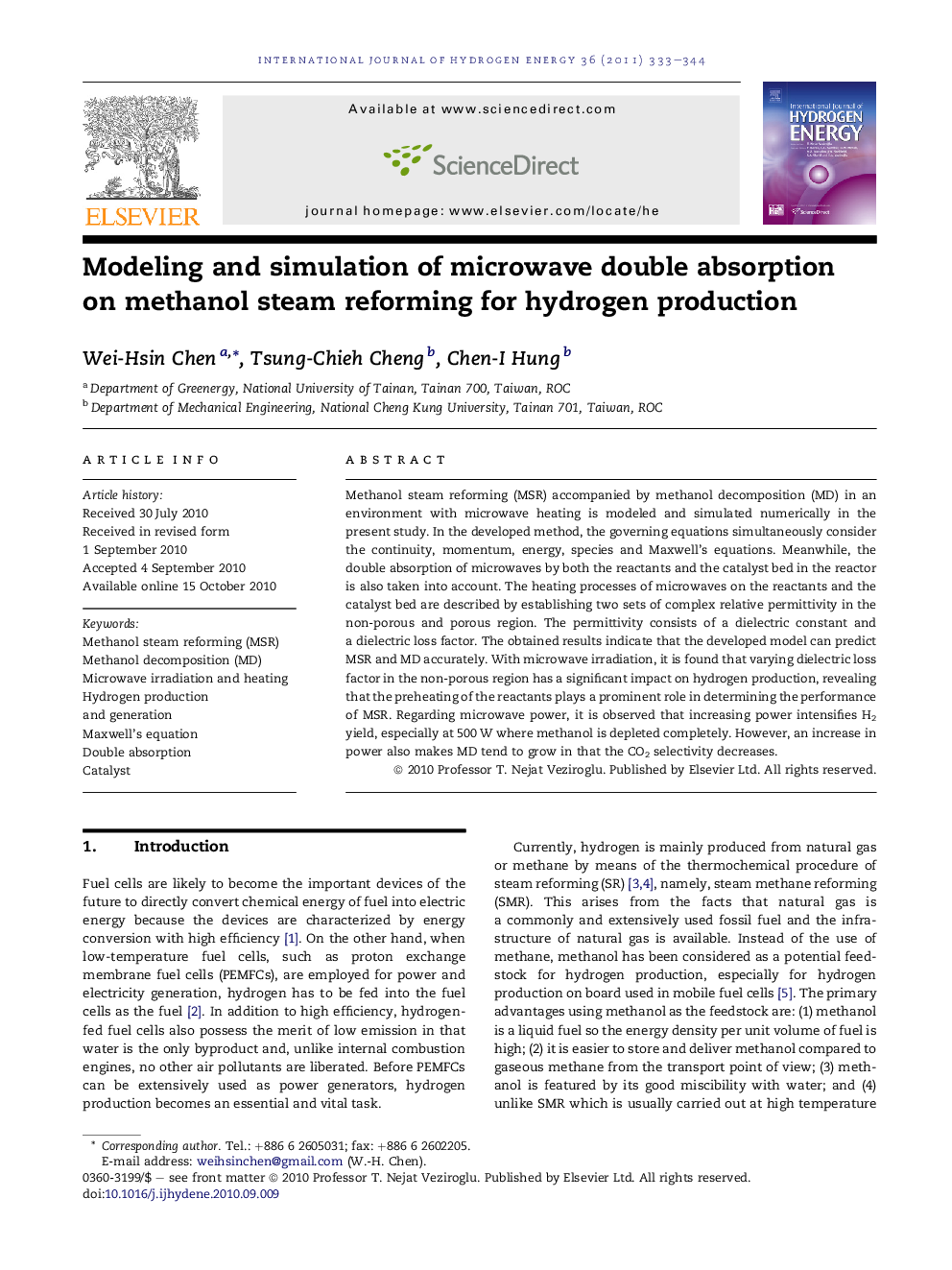| Article ID | Journal | Published Year | Pages | File Type |
|---|---|---|---|---|
| 1277782 | International Journal of Hydrogen Energy | 2011 | 12 Pages |
Methanol steam reforming (MSR) accompanied by methanol decomposition (MD) in an environment with microwave heating is modeled and simulated numerically in the present study. In the developed method, the governing equations simultaneously consider the continuity, momentum, energy, species and Maxwell’s equations. Meanwhile, the double absorption of microwaves by both the reactants and the catalyst bed in the reactor is also taken into account. The heating processes of microwaves on the reactants and the catalyst bed are described by establishing two sets of complex relative permittivity in the non-porous and porous region. The permittivity consists of a dielectric constant and a dielectric loss factor. The obtained results indicate that the developed model can predict MSR and MD accurately. With microwave irradiation, it is found that varying dielectric loss factor in the non-porous region has a significant impact on hydrogen production, revealing that the preheating of the reactants plays a prominent role in determining the performance of MSR. Regarding microwave power, it is observed that increasing power intensifies H2 yield, especially at 500 W where methanol is depleted completely. However, an increase in power also makes MD tend to grow in that the CO2 selectivity decreases.
